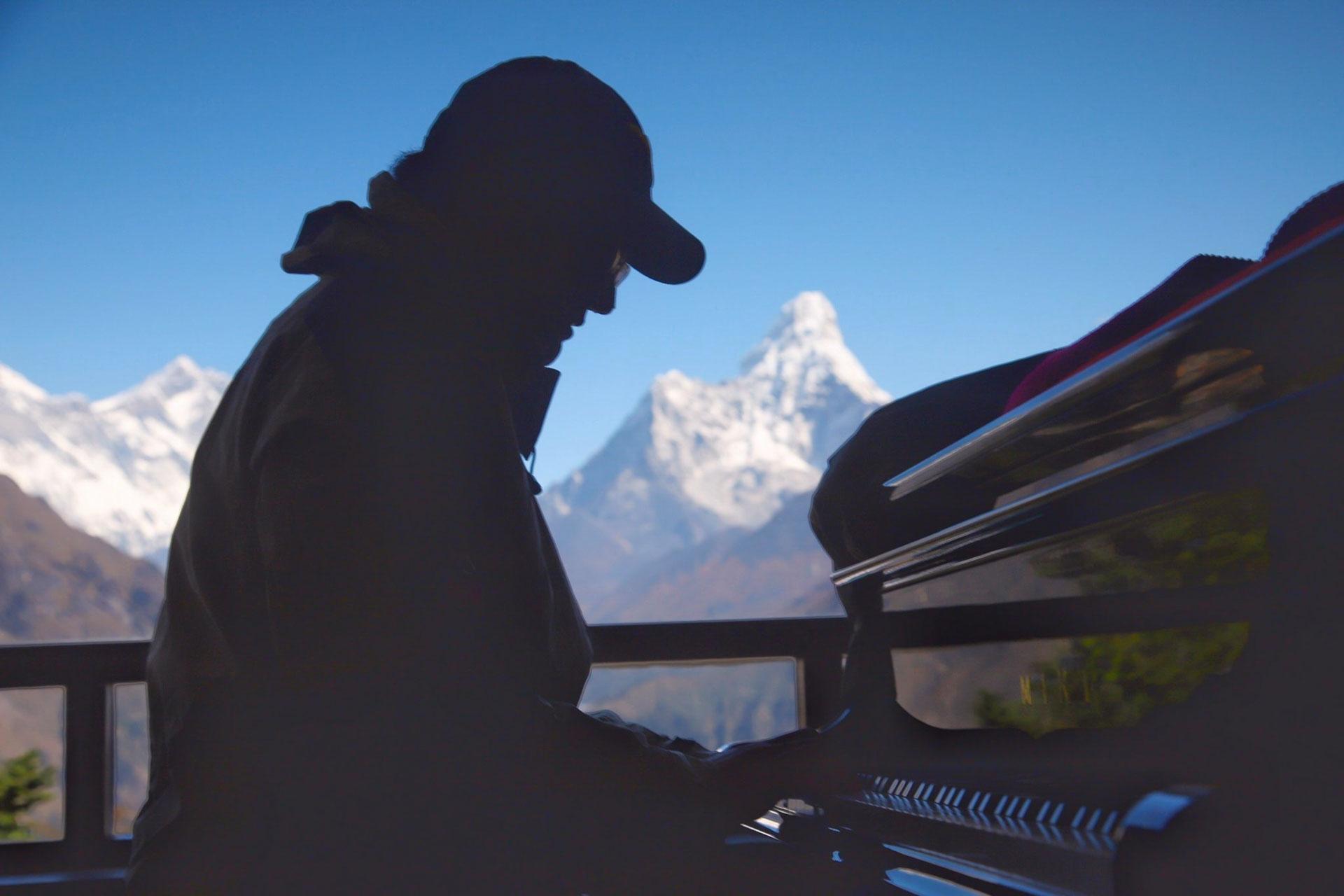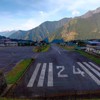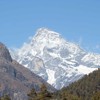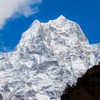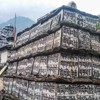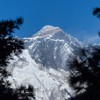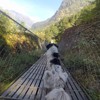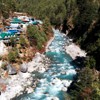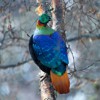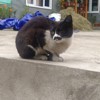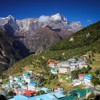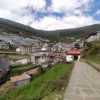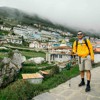Namche Trek - 5 Days
Unknown
NPR 30,241
Flexible Cancellation Policy & Fair Prices
Price is per person for a group of 4 people. Includes Lukla Flights Ramechhap transfer if needed Accommodation on twin sharing basis Breakfast 2-litre hot water/day ADD ONS Guide from Lukla: NPR 2,500 per day Porter from Lukla: NPR 1,800 per day
INR 35,069
Flexible Cancellation Policy & Fair Prices
Price is per person for a group of 3 people. Includes International Airport Transfers Lukla Flights Ramechhap transfer if needed Trekking Guide Porter Service Accommodation on twin sharing basis Breakfast Permits First Aid Kit
USD 825
Flexible Cancellation Policy & Fair Prices
Price is per person for a group of 2 people. Includes International Airport Transfers Lukla Flights Ramechhap transfer if needed Trekking Guide from Kathmandu Porter Service Accommodation on twin sharing basis Breakfast Permits First Aid Kit
HIGHLIGHTS
- Just sit and stare at Mount Everest and her buddies from Hotel Everest View's terrace.
- Enjoy local food, timeless Sherpa hospitality, and of course, local brew in Khumjung.
- Take a leisurely evening walk in the Sherpa capital of Namche Bazar.
- Walk through beautiful forests and see the national bird of Nepal, Danfe, up close.
- Land at the breathtaking Lukla Airport.
QUICK FACTS
- Difficulty LevelEasy
- Total Length45 km
- Highest Altitude3,880 meters
- Elevation Profile
- Start locationLukla
- Finish locationLukla
- PermitsSagarmatha NP Permit, Khumbu Rural Municipality Permit.
- Best SeasonMarch To June. September To December.
DAY TO DAY ITINERARY
- Monjo
(2,820 m)
- Namche Bazaar
(3,460 m)
- Namche Bazaar
(3,460 m)
- Khumjung
(3,780 m)
- Namche Bazaar
(3,460 m)
- Namche Bazaar
(3,460 m)
- Phakding
(2,620 m)
- Lukla
(2,850 m)
DESCRIPTION
The word 'everest' evokes images of extreme adventure and hence a lot of people automatically think that a trek in the Everest region is beyond their physical capacity. Sure, if you are planning to climb Mount Everest or trek to Everest Base Camp, there are certain risks you need to address. But a trek to Namche is a completely different game.
The Namche Trek is physically stimulating rather than challenging. It can be done in an extended weekend as opposed to two weeks. And the best of all, you get to see pretty much everything there is to see, especially if you take a helicopter ride to Kala Patthar and Gokyo Lakes on your last day.
Long story short, this is the perfect trek for those who are looking for a quick getaway that isn't too strenuous.
WHY HONEYGUIDE?
~ Specialized in Everest - From dropping cyclists at Kala Patthar to classy New Year events, we have done some exciting things in Everest. ~ Travelers’ Choice Award 2022 by Tripadvisor - Also, we only use hotels that are highly rated on Tripadvisor. ~ Understand Everest inside out - Extensive online resources and deep community involvement. ~ Only Online Travel Agency in Nepal- Option to book Treks & Heli Tours / Flights / Hotels / Trekking Guides directly. ~ Love the Mountains and are fun to talk to.
If you have any questions, feel free to Call / WhatsApp / Email Bimmi OR Fill out an Enquiry Form.
DETAILED ITINERARY
DAY 1: KATHMANDU/RAMECHHAP - LUKLA - PHAKDING - MONJO (5-6 hrs)
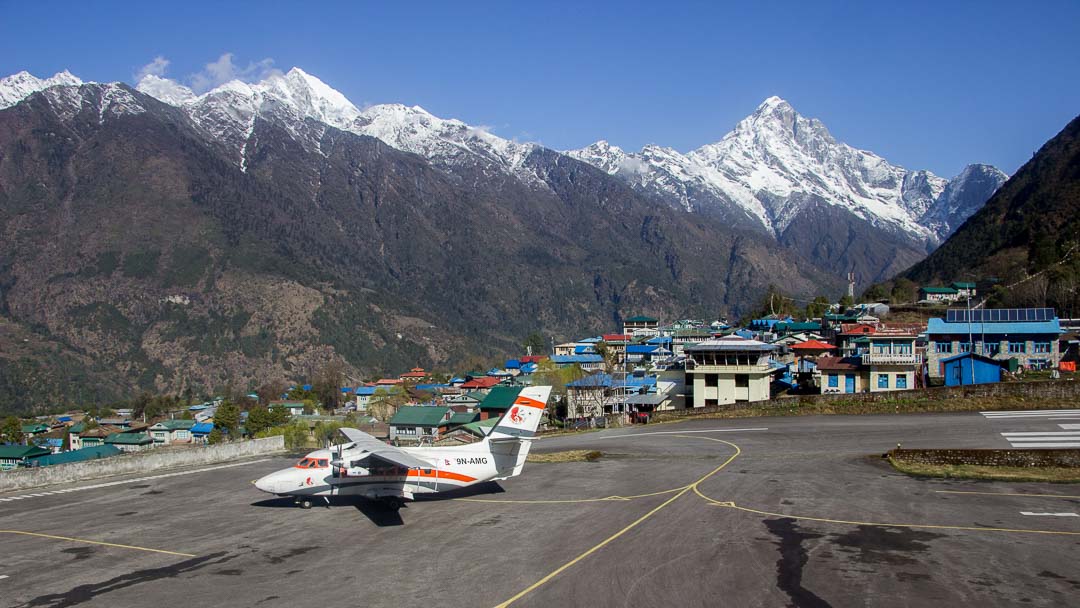 ~ Flight from Kathmandu/Ramechhap to Lukla.
~ Walk for around 3 hours through villages, forests, and some long-ass bridges to reach Phakding for lunch.
~ Walk for another 3 hours to settle for the night at Monjo.
Accommodation: Mount Kailash Lodge, Monjo, or similar.
~ Flight from Kathmandu/Ramechhap to Lukla.
~ Walk for around 3 hours through villages, forests, and some long-ass bridges to reach Phakding for lunch.
~ Walk for another 3 hours to settle for the night at Monjo.
Accommodation: Mount Kailash Lodge, Monjo, or similar.
DAY 2: MONJO - NAMCHE (2-3 hrs)
 ~ Get your Sagarmatha National Park permits at Jorsalle.
~ Walk uphill for around two to three hours to reach Namche Bazaar for lunch.
~ Stroll around Namche and enjoy the sunset from the National Park View Point.
Accommodation: Khumbu Lodge / Hotel Namche, Namche Bazaar, or similar.
~ Get your Sagarmatha National Park permits at Jorsalle.
~ Walk uphill for around two to three hours to reach Namche Bazaar for lunch.
~ Stroll around Namche and enjoy the sunset from the National Park View Point.
Accommodation: Khumbu Lodge / Hotel Namche, Namche Bazaar, or similar.
DAY 3: NAMCHE - HOTEL EVEREST VIEW - KHUMJUNG - NAMCHE (2-3 hrs)
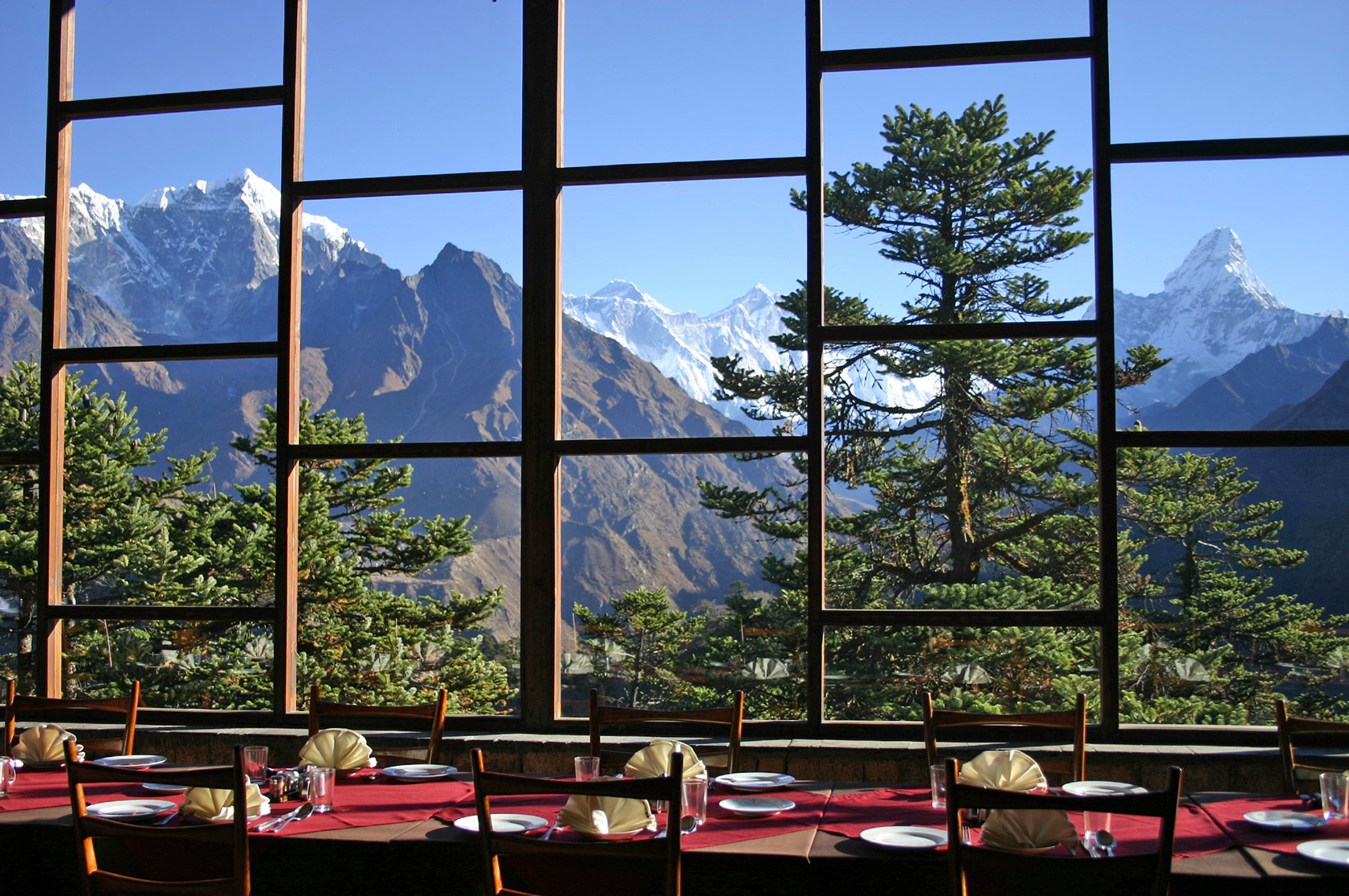 ~ After breakfast at Namche, walk to Hotel Everest View at Syangboche to enjoy amazingly stunning mountain views.
~ Play the grand piano at 3,880 meters.
~ Return to Namche through the twin Sherpa villages of Khumjung and Khunde (2 hours).
Accommodation: Khumbu Lodge / Hotel Namche, Namche Bazaar, or similar.
~ After breakfast at Namche, walk to Hotel Everest View at Syangboche to enjoy amazingly stunning mountain views.
~ Play the grand piano at 3,880 meters.
~ Return to Namche through the twin Sherpa villages of Khumjung and Khunde (2 hours).
Accommodation: Khumbu Lodge / Hotel Namche, Namche Bazaar, or similar.
DAY 4: NAMCHE - LUKLA (7-8 hrs)
 ~ Walk down from Namche to Lukla
Accommodation: Khumbu Resort / Himalaya Lodge or similar.
~ Walk down from Namche to Lukla
Accommodation: Khumbu Resort / Himalaya Lodge or similar.
DAY 5: LUKLA - KATHMANDU (25 min)
 ~ Fly back to Kathmandu/Ramechhap.
~ Fly back to Kathmandu/Ramechhap.
CONTACT
If you have any questions, feel free to Call / WhatsApp / Email Bimmi OR Fill an Enquiry Form.
We will happily tweak this tour to your liking. Some possible changes are: ~ Travel by helicopter between Kathmandu and Lukla - approx. USD 400 per person one way | USD 2,400 per flight. ~ Book rooms with attached bathrooms where possible - approx. USD 10 per night per person. ~ Add hotel and/or city tour in Kathmandu - approx. USD 100 per person. ~ Include meals and hot water - approx. USD 35 per day for three meals + hot water. ~ Heli tour to Kala Patthar and drop off at Lukla on Day 4 - NPR 28,000 per person (at 5 pax) ~ Pony - NPR 8,000 per day
INCLUSIONS AND EXCLUSIONS
Includes
~ Flights between Kathmandu/Ramechhap and Lukla ~ Transport service to Ramechhap if needed ~ Accommodation on twin sharing basis ~ 4 Breakfasts ~ Trekking Guide (not included for Nepali groups) ~ Porter Service (not included for Nepali groups) ~ All Government and Local Permits(not included for Nepali groups) ~ First Aid Kit (not included for Nepali groups)
Excludes
~ Breakfast on Day 1 ~ Meals other than 4 breakfasts (NPR 600 - 1000 per meal) ~ Tips for guides and porters (15% of wages is considered fair) ~ Battery Charging. (NPR 100-500 per hour) ~ Hot Shower. (NPR 300-500) ~ Drinks, Travel Insurance, and anything else not mentioned in Inclusions.
EVEREST PLANNING RESOURCES
SAFETY FIRST Nepal Visa and Safety Update / Pre-existing Conditions / Altitude Illnesses / Water Safety / Heli Safety Briefing / Insurance / Detailed Health and Safety Post
FIND YOUR PERFECT TOUR Short Treks / Heli Tours / Heli Treks / Ways to See Everest / All Tours
BEST TIME TO GO Best time for EBC | EBC in Jan / Feb / Mar / Apr / May / Jun / Jul / Aug / Sep / Oct / Nov / Dec
PLANNING ESSENTIALS Expectation vs Reality / Cost in USD, INR & NPR / Difficulty / Training / Packing List / Maps / Permits / Side Trips / Solo Treks / Independent Treks / For Women
FLIGHTS TO LUKLA Online Flight Booking / Getting to Lukla / Lukla Weather and Flights / Survival Guide / Alternatives / Lukla Airport / Getting to Ramechhap / Ramechhap Flights
HOTELS IN EVEREST Online Hotel Booking / Overview / Hotels in Lukla / Namche / Dingboche / Lobuche / Gorakshep / Gokyo
TREKKING GUIDES FOR EVEREST Trekking Guides from Lukla / from Kathmandu / How to hire a guide?
WHAT TO EXPECT Hotels in Everest / WiFi, Mobile Network, Electricity / Food and Drinks / Sherpa Food / For Vegans
CULTURE Epic Photo ops / Sherpa Names / Khumbila / 5 Secrets / Festivals / Tengboche Monastery /
NATURE Mount Everest / Everest Base Camp / Everest Viewpoints / Kala Patthar / Ama Dablam / Mount Mera / Mountains / Birds / Wildlife / Flowers / Lakes /
VILLAGE DETAILS Lukla / Phakding / Monjo / Namche / Tengboche / Deboche / Pangboche / Dingboche / Pheriche / Thukla / Lobuche / Gorakshep / Dzongla / Gokyo / Thame / All Villages
FAQS
Traveling to the mountains poses some inherent risks. As such, the best strategy is to prepare for the worst and then hope for the best.
PRE-EXISTING CONDITIONS
The first thing to keep in mind is to see if you have pre-existing conditions that could cause complications at high altitudes. Specifically, suppose you have sickle cell disease, pulmonary hypertension, obesity hypoventilation syndrome, or congenital heart problems. In that case, we highly recommend you consult with a qualified physician before planning a trip to the mountains. Read more.
ALTITUDE-ILLNESS
Given the low amount of oxygen at high altitudes, a sensible ascent is essential to give your body the time to acclimate to the thin air. Failure to do so can lead to your lungs or brain filling up with water leading to death in some cases. The key is not to climb more than 500 meters in one day once you pass the 2,500 meters mark. Read more.
ENVIRONMENTAL HAZARDS
Given the extreme weather in the high mountains, proper gear and regimen must have a safe and comfortable tour. The three most important things that you have to prepare for are cold, snow, and radiation. As such, invest in the right sunglasses, sunscreen, boots, and clothing. Read more.
TRAVEL INSURANCE
We highly recommend everyone get travel insurance covering high altitude evacuation before leaving on a trek to the high mountains. Global Rescue and World Nomads are both highly recommended. For Nepali travelers, please note that insurance that covers helicopter rescue is not available as of now. As such, please be careful while planning your tour and only work with companies that can provide timely evacuation service if needed.
RESCUE AND EMERGENCY
As health facilities are limited in the mountains, a helicopter's evacuation is usually the only option during an emergency. As such, the right insurance provider is essential. If you are not buying insurance for some reason, please ensure that there is someone in Kathmandu who can coordinate payments for a helicopter rescue. Here are some other contacts that might come in handy during an emergency. If you still have questions, please feel free to call / whatsapp us at +977-9801916215 or email Ashish at nectar@honeyguideapps.com
HOW DO I MAKE A PAYMENT?
To confirm your tour, you will have to make complete payment either through one of your integrated payment gateways or transfer the funds to the following bank accounts:
For Nepali citizens:
Account Name:: HoneyGuide Pvt. Ltd. Beneficiary Bank: Himalayan Bank, Patan Branch Account Number: 00606903770018For Indian Citizens:
For USD transfers
Account Name: HoneyGuide Apps, Inc. Bank Name: Silicon Valley Bank Account Number: 3302225311 Swift Code: SVBKUS6S ABA Routing Number: 121140399BOOKING A TOUR
Deposit Required for Reservation: 50 percent of total tour cost Deadline for Full Payment: 2 weeks before the tour begins
CHANGING A TOUR
Two weeks before tour date: No extra charge 1 to 2 weeks before tour date: 10% additional charge Two days to 1 week between tour date: 20% additional charge Within two days of tour date: Above 30% (variable)
CANCELLING A TOUR
Two weeks before tour date: No charge (transaction charges may apply) One to two weeks before tour date: 20% Cancellation Charge Two days to one week between tour date: 50% Cancellation Charge Within two days of tour date: No Refund.
DELAYS AND CHANGES DURING THE TOUR
In case of flight delays/cancellations due to bad weather or unforeseen circumstances, HoneyGuide will change the dates at no additional costs. However, any extra cost incurred, including but not limited to accommodation and food, will be the responsibility of the traveler.
In case of changes due to the trekker's health issues, HoneyGuide will make all the changes without any additional cost. However, any extra charge because of the changes will be the responsibility of the traveler.
While Nepal's mountains see six seasons, the best period to go to the mountains is from March-May and September-December. However, every season has its quirk, just like people. So keep reading to find your match.
For those going to Everest Region, do check out the Best time to go to Everest post.
January/February (Winter)
January/February is a good time for trekkers willing to brave the cold and snow for empty trails, fantastic mountain views, and wildlife sightings.
March/April (Spring)
This is a period that offers a little bit of everything: a little bit of mountain view, a little bit of warm weather, a little bit of flowers, a little bit of crowd, and a whole lot of fun.
May/June (Summer)
This is the best time for those into nature. The flowers are quite something this time of the year, and the bird activity is fantastic. The monsoon hasn't started, and as such, mornings are still clear with beautiful mountain views.
July/August (Monsoon)
Only for hardcore trekkers who are willing to put up with the elements for an authentic cultural experience and high altitude flowers. Also, flight disruptions are very likely, and chances of mountain views are close to zero.
September/October (Fall)
This period is everyone's darling, and the trails are as crowded as they can be. The mountain views are something to write home about, and the temperature is just perfect.
November/December (Pre-Winter)
Another popular period among trekkers and the driest two months in the calendar. Indeed it has gotten a bit nippy during the mornings and evenings, but it is still manageable. Count on a lot of sunshine and crystal clear mountain views.
